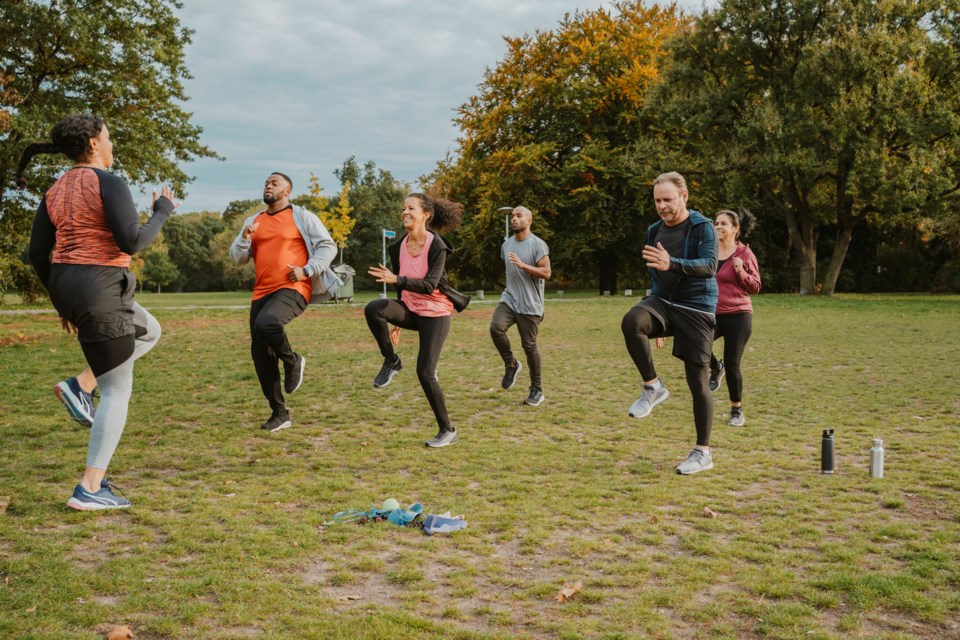We have all heard the cliché “move it or lose it”, but what is the truth behind it? This is what I will explore in this article, focusing on the role and importance of movement to build muscle in our bodies, in order to literally keep our structure strong enough to live in. Our body is our home – where else will we live?
We have 640 muscles in our body which are responsible for 40% of our weight (if we are at a healthy weight). Someone’s weight does not indicate their overall health as muscle is denser than fat and weighs more. BMI (body mass index) indicates the portion of fat per overall body weight (but that is another article). Back to muscles: There are very good reasons to build muscle and keep muscle. I will look at a few of those reasons, but first a bit of anatomy. There are three main types of muscles in our bodies: cardiac (heart wall lining), smooth (lining our organs), and skeletal. I will focus on skeletal, as this is what we mainly have control over. Our skeletal muscles work with our brain and nerves in our neuromuscular system to create movement in our bodies.
If we move regularly (often and every day) and use our various muscles, we feel young longer and don’t age as fast as those with sedentary lifestyles. This is because muscles that are not used will atrophy (waste away). This is the premise of ‘use it or lose it’. Physiological muscle atrophy affects those who have seated jobs, existing health problems that limit movement, and those who just lack any motivation to exercise. Sadly, this condition is not just an ‘old person’ ailment anymore. With the computer age and the addictive nature of social media and video games etc., younger and younger people are being affected by muscle atrophy. The health of our youth should cause great concern for us. Muscle atrophy is also common after an injury or surgery when we stop using the body part affected. This is why physiotherapy is required to regain mobility.
There are 3 stages to muscle atrophy.
Stage 1 – posture issues where the head is so used to being forward (texting, computer work or gaming) that it feels uncomfortable to sit or stand upright and keep shoulders erect, as this causes pain for the individual, they will avoid proper posture and stay in the more comfortable slouched curved position.
Stage 2 – it is hard for the individual to put themselves into a proper posture position without help, as they have started to lose the strength to do so.
Stage 3 – the individual will not be able to develop and maintain proper posture even with assistance as the muscles required have withered and stopped working. As atrophy sets in, the aging process speeds up and decline happens rapidly. It is not impossible to rebuild the atrophied muscles but would require physiotherapy and may involve stimulating affected muscles with IMS (intra-muscular stimulation) or TENS (trans-cutaneous electrical nerve stimulation). Exercising other surrounding muscle groups can also help. Swimming or just movement in the pool are some of the gentlest ways to start using muscles that have been neglected. Once our muscles have atrophied it is a long haul before recovery is noticeable so don’t expect to see rapid results over night.
As the first and second stages of atrophy are easier to reverse it is very important to exercise regularly to avoid the third stage. Nutrition is also important. What we eat feeds all of the cells in our body including the cells in our muscles. A deficiency in Vitamin D is associated with muscle atrophy (according to studies done at Oxford University). Choose high quality proteins, and supplement or incorporate foods high in vitamins D, C and E as well as healthy fats containing Omega 3, and creatine – which all help to prevent the breakdown of muscles. It is important to take care of bone health also so include calcium rich foods like salmon, sardines, leafy greens, dairy (if you must), broccoli, orange juice... and magnesium. Eating a diet that prevents inflammation is also very helpful.
I am very concerned about the lack of movement in people today (including in my own family and myself). Many don’t make exercise a priority because of a variety of reasons including but not limited to: No time, lack of motivation, taking care of other people’s needs, boredom with exercise, lack of confidence, body shame or embarrassment, fear of being injured, lack of discipline, self-management or goal setting skills, distraction by screen and other addictions, disconnection from the body, apathy, resistance to the idea of physical work, and so on…
Lack of space limits my delving into solutions but in a future article I will discuss the physiological and psychological benefits of exercise and the importance of creating an exercise habit. I will also explore some various forms of exercise that don’t require a gym membership.
Claire Nielsen is a health coach, author, public speaker and founder of www.elixirforlife.ca. The information provided in the above article is for educational purposes only and is not a substitute for professional health and medical advice. Please consult a doctor, health-care provider or mental health practitioner if you're seeking medical advice, diagnoses and/or treatment


